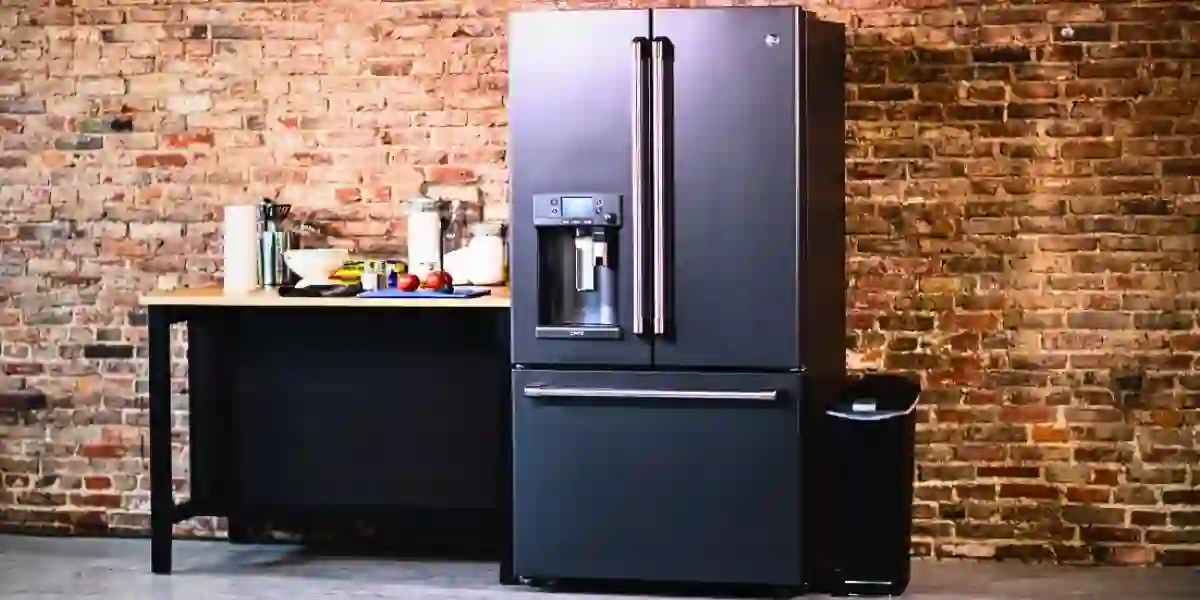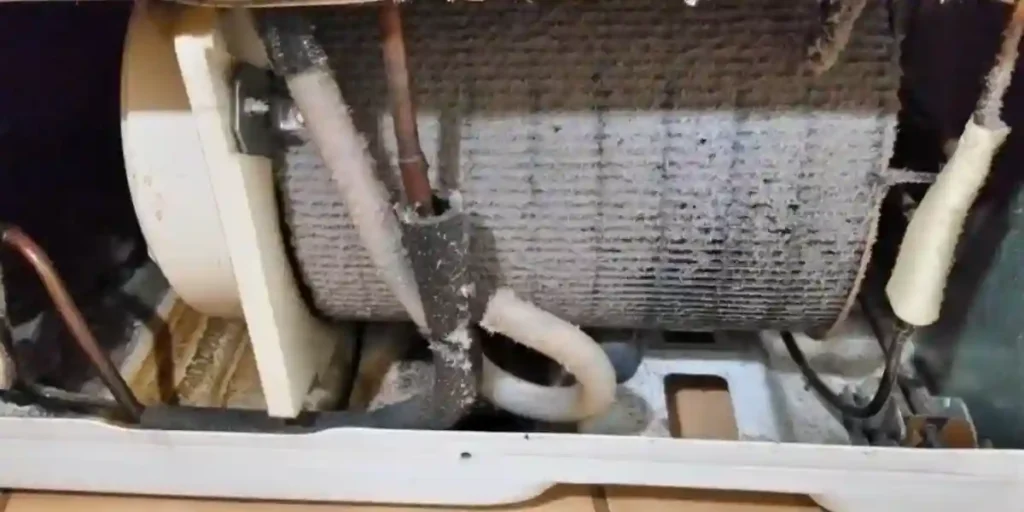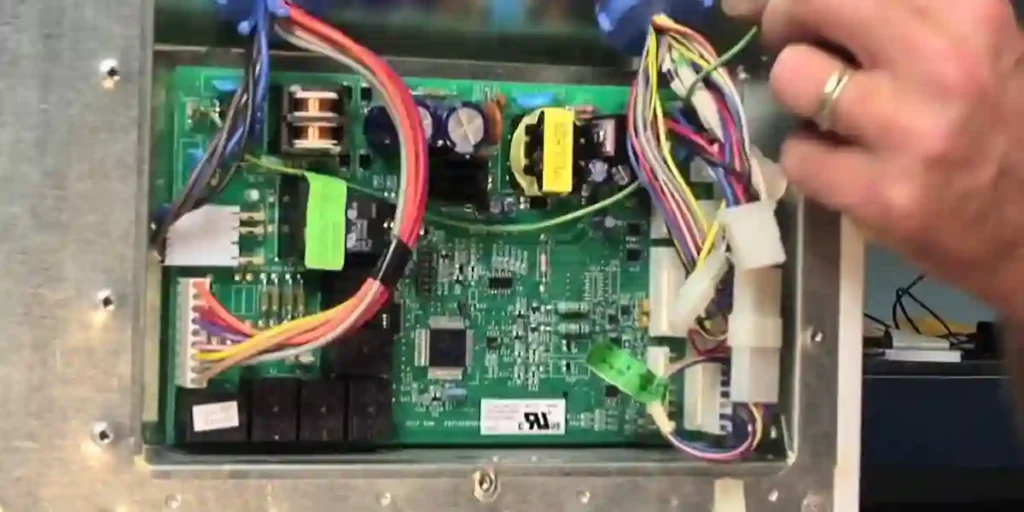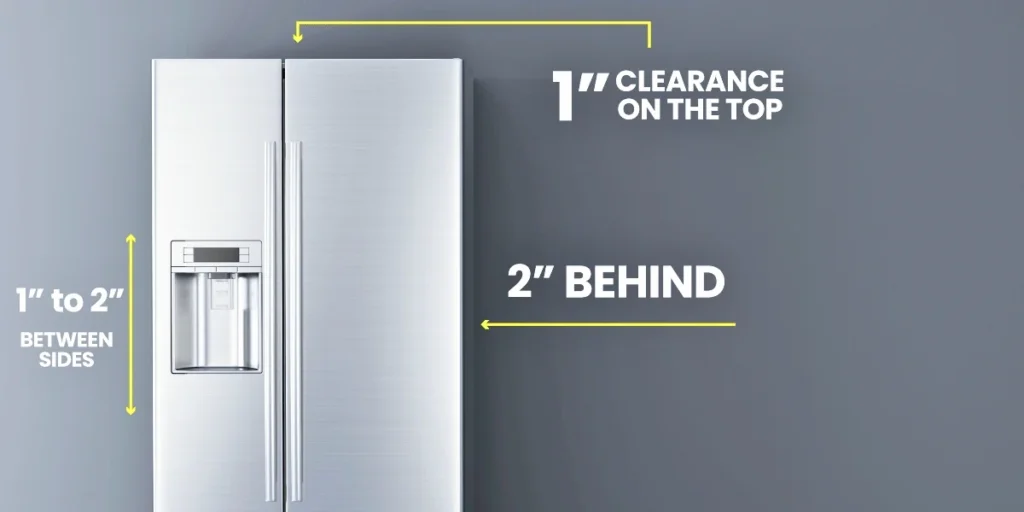Ever puzzled why your GE Cafe refrigerator isn’t keeping your ice cream frozen?
I’m here to guide you through the mysteries of refrigerator cooling. We’ll dive into thermostats, power sources, and even those sneaky vents!

GE Cafe Refrigerator Not Cooling
Is your GE Cafe refrigerator not cooling?
First, check the thermostat settings. Next, make sure the vents, compressor, and evaporator coils are clear of obstructions.
Vacuum the coils located at the back or underneath the refrigerator. Also, listen for any unusual sounds when the fridge is unplugged.
7 Reasons And Effective Fixes for a GE Case Refrigerator Not Cooling
Power Source Has Been Switched Off
Firstly, make sure your refrigerator’s power cord is plugged in tightly. Accidentally, the power may be off. Also, check your home’s circuit breaker.
It’s the one linked to the refrigerator. If it’s tripped, the power supply gets disrupted. In this case, cooling becomes insufficient.
So, before moving on, fix any power source issues you spot.
Thermostat Isn’t Set Properly
Your refrigerator’s thermostat controls the temperature. A wrong setting may disrupt cooling. Always check your thermostat and fine-tune it to the right temperature.
Keep in mind, setting a very low temperature can strain the refrigerator. This impacts cooling efficiency.
Blocked Vents
Cool air circulates in your refrigerator through vents. Over time, food or other objects might block these vents. This blocks the flow of air.
So, inspect the vents carefully. Remove any items blocking them. It’s essential to maintain clear airflow for optimal cooling.
Dirty Condenser Coils

Condenser coils, often at the refrigerator’s back or bottom, are important for heat dissipation.
Dirt or dust-covered coils are less efficient at releasing heat. This impacts the cooling performance of the refrigerator.
To solve this, clean the coils with a vacuum or a special brush. Regular cleaning maintains optimal cooling and prevents future issues.
Dirty or Faulty Gaskets
Gaskets are rubber seals around refrigerator doors. They keep the cool air in and the warm air out.
However, dirty or damaged gaskets may fail to seal effectively. This allows the cold air to escape and warm air to get in.
This leads to inadequate cooling. Clean gaskets regularly with a soap and water solution. If gaskets are damaged, consider replacing them to restore cooling efficiency.
Not Enough Space Clearance
Refrigerators need sufficient space around them for proper ventilation. If your refrigerator is too close to walls or other appliances, airflow can get restricted.
This affects the cooling performance. Ensure at least one inch of clearance on all sides of the refrigerator.
This facilitates proper air circulation, prevents heat buildup, and ensures efficient cooling.
Broken or Stuck Condenser Fan
The condenser fan circulates air around the condenser coils for cooling. If it’s broken or stuck, the air doesn’t circulate well.
This leads to inadequate cooling. In such cases, consider replacing the fan.
Refer to the user manual or hire a professional technician to identify the correct replacement and install it properly.
Faulty Circuit Board

The circuit board controls various refrigerator components, including the thermostat, fan, and compressor.
A faulty board can disrupt these parts, leading to cooling issues.
If you suspect a faulty circuit board, consider having it replaced by a technician. They can diagnose the issue accurately and ensure the refrigerator’s electrical system is operating optimally.
Preventive Maintenance Tips to Ensure Proper Cooling
Check the Thermostat Setting
Remember, the thermostat inside your refrigerator is a very special device. This device helps to decide how cold your refrigerator should be.
To keep your food fresh and safe, the temperature needs to be just right. It should be between 37 and 40 degrees Fahrenheit.
You can check and change this setting. You can find it on the control panel which is usually on the front of your refrigerator.
Clean the Condenser Coils
On the back or bottom of your refrigerator, there are some special coils called condenser coils. These coils do a very important job.
They take the heat out of your refrigerator. But, if these coils get dirty, they can’t take out as much heat.
This can make your refrigerator too warm. You can clean these coils. Just use a vacuum cleaner or a brush to clean off the dust.
Clean the Gaskets
Around the doors of your refrigerator, there are rubber seals. These are called gaskets.
They help keep the cold air inside your refrigerator. But, if the gaskets are dirty or broken, they can’t keep the cold air in as well.
This can make your refrigerator too warm. You can clean the gaskets with soapy water. If they are broken, you might need to replace them.
Leave Space Around the Refrigerator

Your refrigerator needs to breathe! If your refrigerator is too close to walls or other appliances, it might not be able to cool properly.
Make sure there’s some room around your refrigerator. Try to leave at least 1 inch of space on all sides.
Regularly Defrost the Refrigerator
Sometimes, ice can build up inside your refrigerator. This can block the cold air from moving around.
If this happens, your refrigerator might not be able to stay cold. You can fix this by defrosting your refrigerator. Try to do this every 6 months.
Avoid Overloading the Refrigerator
A refrigerator that’s too full can’t cool properly. The cold air needs space to move around.
If there’s too much stuff in your refrigerator, it might not be able to stay cold. Try to only put as much food as you need in your refrigerator.
Keep the Refrigerator Door Closed
Every time you open the door of your refrigerator, some warm air gets inside. This can make your refrigerator work harder to stay cold.
Try to keep the door closed as much as possible. Think about what you need before you open the door.
Schedule Regular Servicing for Your Refrigerator
Just like a car, your refrigerator needs regular check-ups. A professional can check your refrigerator to make sure it’s working properly.
They can also clean parts of your refrigerator that are hard to reach. Try to have your refrigerator checked at least once a year.
Don’t Store Hot Food in the Refrigerator

Hot food can make your refrigerator work harder to stay cold. Always let your food cool down before you put it in the refrigerator.
Keep the Refrigerator Clean
A clean refrigerator is a happy refrigerator! Regularly clean the inside of your refrigerator. You can use a mix of soap and water. This can help your refrigerator stay cold.
Promptly Dispose of Spoiled Food
Sometimes, food goes bad. When this happens, it can make other food in your refrigerator go bad too.
If you see any spoiled food, throw it away right away. This can help keep your refrigerator clean and cold.
FAQs
How Do I Check If The Thermostat Is Working Properly?
Ensure that the thermostat is set to the correct temperature, and listen for a clicking sound indicating it is functioning. Consider adjusting the thermostat settings or consulting a technician.
What Should I Do If The Vents Are Blocked?
Inspect the vents and remove any obstructions, allowing proper airflow for efficient cooling. Clearing the vents can often resolve cooling problems.
How Do I Clean The Condenser Coils?
Use a vacuum cleaner or a brush to remove dirt and debris from the condenser coils located at the back or bottom of the refrigerator. Regular cleaning helps maintain optimal cooling performance.
What Are Some Signs Of A Faulty Condenser Fan?
If you hear unusual noises or notice inadequate cooling, it could indicate a broken or stuck condenser fan. Consider replacing the fan to restore proper airflow.
Can I Fix The Cooling Issue Myself, Or Should I Call A Professional?
Try troubleshooting and resolving common issues yourself, such as cleaning coils and checking vents. However, for more complex problems, it’s advisable to seek professional assistance.
How Can I Prevent Future Cooling Problems With My GE Cafe Refrigerator?
Regularly clean the condenser coils, check and clear vents, and maintain proper clearance around the refrigerator. Additionally, schedule professional maintenance to ensure optimal performance.
Conclusion
With the right knowledge, you can solve cooling issues in your GE Cafe refrigerator. Start by checking the thermostat, vents, and power supply.
Regular cleaning of condenser coils, gaskets, and vents can boost efficiency. Remember to leave space around the refrigerator for good airflow.
Timely professional servicing can also avoid further problems. All these actions ensure your refrigerator stays at the optimal temperature.

